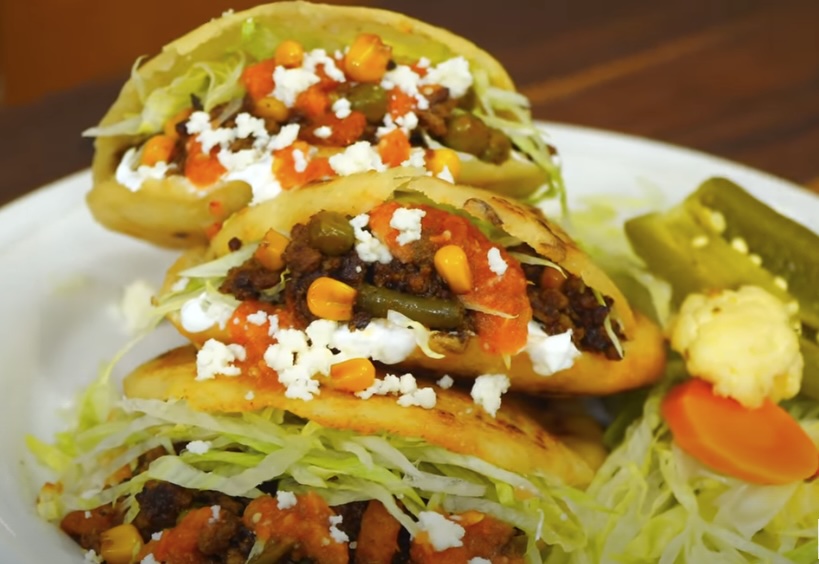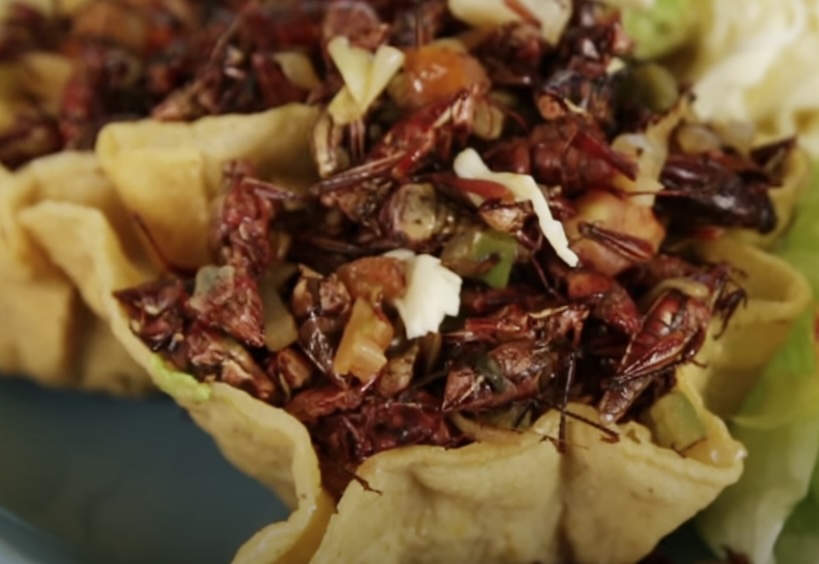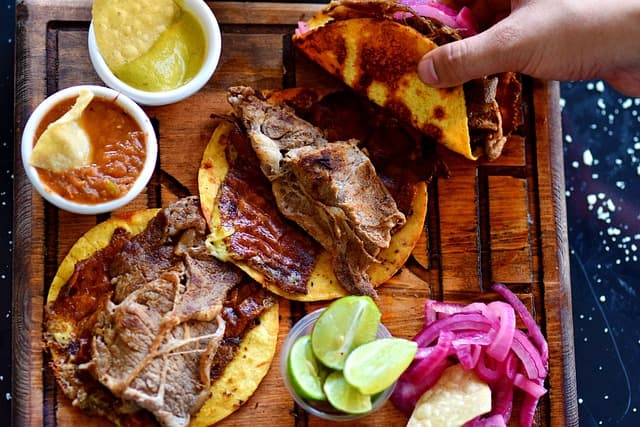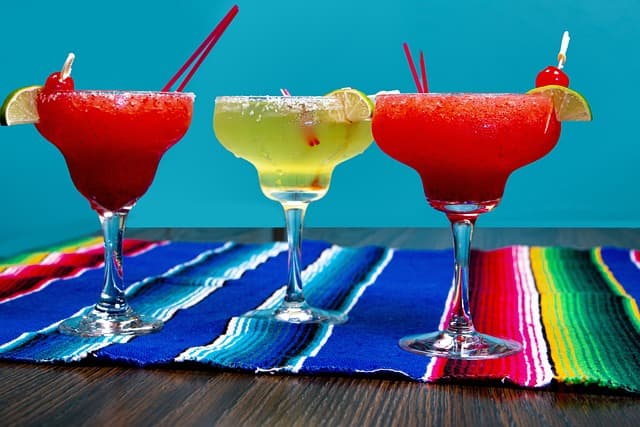Mexico, a vibrant land known for its rich cultural heritage and exquisite cuisine, has always been a haven for food enthusiasts. From tantalizing tacos to mouth-watering mole, the Mexican culinary landscape is as diverse as it is flavorful. However, not all Mexican dishes have won the hearts of locals and tourists alike. In this article, we dive deep into the world of the worst Mexican food, exploring those street foods and dishes that have earned a less-than-stellar reputation.
The Surprising Side of Street Foods

The Overly Greasy Gorditas
Gorditas are a quintessential Mexican street food, known for their thick, stuffed tortillas filled with an array of ingredients, from savory meats to rich cheeses and vibrant vegetables. However, amid the diversity of gordita offerings, some versions have garnered infamy for their excessive use of cooking oil.
Common Complaints:
- Excessive Grease: The primary and most glaring issue with these gorditas is the overwhelming amount of oil used during their preparation. This excess oil not only impacts the overall taste but also leaves a heavy, cloying sensation in the mouth, which can be far from pleasant.
- Health Concerns: Beyond the immediate taste and texture concerns, the high oil content in these gorditas raises legitimate health concerns. Consistently consuming overly greasy foods can contribute to weight gain and a host of associated health problems, including cardiovascular issues and cholesterol imbalances.
Tlayudas: The Disappointing Oaxacan Pizza
Tlayudas, often described as the “Oaxacan pizza,” are essentially large tortillas smothered with a delectable mixture of beans, cheese, and various meats. Originating from Oaxaca, Mexico, this dish has gained notoriety in the world of street foods.
Issues:
- Excessive Dryness: One of the most prevalent criticisms lodged against street Tlayudas is their tendency to be overly dry. The lack of moisture in the tortilla can make consuming them a challenging and somewhat unsatisfying experience.
- Lacking Flavor: In addition to the dryness issue, some iterations of Tlayudas may fall short in terms of flavor. The absence of a robust taste profile can be particularly disappointing for those expecting the vibrant, rich spices and flavors commonly associated with Mexican cuisine.
The Misfortunes of Menudo
Menudo is a traditional Mexican soup made from cow stomach (tripe) and a red chili pepper-based broth. This hearty and comforting dish has been a staple of Mexican cuisine for generations, often enjoyed as a hangover remedy or weekend brunch treat.
Why it’s Disliked:
- Texture of Tripe: The divisive nature of Menudo often stems from the unique texture of cow stomach (tripe). Tripe can be somewhat chewy and slightly rubbery, making it an acquired taste that not everyone appreciates. The textural contrast with the broth can be off-putting for some palates.
- Strong Flavor: Additionally, Menudo’s potent flavor, courtesy of the fiery red chili pepper broth, can be overwhelming for individuals who prefer milder tastes. The bold and spicy profile may not align with everyone’s flavor preferences, leading some to consider it too intense.
Dishes That Didn’t Make the Cut

Chapulines: The Crunchy Critters
Chapulines are a distinctive delicacy in Mexican cuisine, consisting of grasshoppers that are toasted and seasoned with an array of spices. However, these tiny critters often find themselves at the center of a culinary conundrum. Their aversion is primarily rooted in the cultural stigma attached to consuming insects, causing many to hesitate when faced with a plate of chapulines.
- Cultural Tradition: Chapulines have a deep-rooted history in Mexican gastronomy, especially in the Oaxaca region, where they are considered a culinary treasure.
- Nutritional Value: Contrary to the initial aversion, chapulines are packed with protein and essential nutrients, making them a nutritious snack.
- Seasoning: The seasoning of chapulines typically includes ingredients like garlic, lime, and chili powder, imparting a distinctive flavor profile.
- Psychological Barrier: The primary reason for the widespread dislike of chapulines is the psychological barrier associated with eating insects.
- Unexpected Pleasure: Adventurous eaters who overcome their hesitation often discover a delightful and crunchy snack.
- Detailed Explanation: Chapulines, also known as grasshoppers, have been consumed in Mexico for centuries. In Oaxaca, they are particularly cherished and are a staple in local cuisine. The process of preparing chapulines involves cleaning and toasting the grasshoppers before they are seasoned. This seasoning often includes garlic, lime juice, and chili powder, which gives chapulines their unique and savory flavor.
Despite their nutritional benefits and popularity among some, the cultural stigma surrounding eating insects remains a significant hurdle for chapulines. The idea of consuming grasshoppers can be off-putting for many, leading them to be considered one of the least favored Mexican foods among tourists and even some locals. However, those who muster the courage to try chapulines are often pleasantly surprised by their crunchiness and flavorful seasoning.
Mole Amarillo: The Overwhelming Oaxacan Sauce
Mole amarillo is a remarkable sauce originating from the Oaxaca region of Mexico. This complex concoction combines an array of ingredients, including chilies, spices, and sometimes even chocolate. Yet, despite its culinary sophistication, some diners find themselves overwhelmed by its intricate and intense flavor profile.
- Complexity: Mole amarillo is celebrated for its complexity, as it brings together diverse ingredients and flavors into one harmonious sauce.
- Variability: The flavor of mole amarillo can range from mild to spicy, offering a broad spectrum of taste experiences.
- Traditional Pairing: This sauce is traditionally served with poultry, particularly chicken or turkey.
- Preparation Process: Crafting mole amarillo involves the meticulous toasting and grinding of ingredients such as guajillo and pasilla chilies, garlic, onions, and spices.
- Acquired Taste: The bold and multifaceted flavor profile makes mole amarillo an acquired taste, which not everyone immediately appreciates.
- Detailed Explanation: Mole amarillo is a culinary masterpiece that showcases the rich traditions of Oaxacan cuisine. It is known for its vibrant yellow color and is created by skillfully blending various ingredients. These ingredients can include ancho and guajillo chilies, cloves, cinnamon, chocolate, and other spices, resulting in a sauce that offers a symphony of flavors.
The complexity of mole amarillo is what sets it apart, as it balances sweet, savory, and spicy elements in a single dish. While enthusiasts celebrate its intricate flavors, some diners, particularly those unaccustomed to the nuances of Mexican cuisine, may find it overwhelming. However, for those willing to explore, mole amarillo can be a rewarding and unforgettable culinary adventure.
Moronga: A Blood Sausage Saga
Moronga, often referred to as blood sausage, is a sausage made from pig’s blood mixed with a blend of spices such as cumin, onions, and garlic. Yet, this Mexican dish faces a formidable challenge in its reputation, primarily due to the concept of using blood as a central ingredient in food.
- Unique Ingredient: Moronga stands out for its use of pig’s blood, which contributes to its distinctive dark color and rich flavor.
- Alternative Names: In some cultures, moronga is known as “black pudding” and has variations across different regions.
- Preparation: Creating moronga involves collecting pig’s blood and mixing it with spices, resulting in a unique blend of flavors and textures.
- Cultural Barrier: The primary reason for its ranking among the least favored Mexican foods is the cultural and psychological barrier associated with consuming blood as a food ingredient.
- Detailed Explanation: Moronga, or blood sausage, is a dish that challenges conventional notions of sausage. Its preparation involves collecting fresh pig’s blood and mixing it with a medley of spices, creating a blend that is both savory and robust in flavor. The sausage is then cooked until it reaches a firm, dark consistency, making it visually distinct from traditional sausages.
Despite its undeniable culinary history and significance in Mexican cuisine, moronga faces resistance due to the visceral reaction some individuals have towards the use of blood as an ingredient. This cultural and psychological barrier has contributed to its relatively low popularity compared to other Mexican dishes. However, for those with a more adventurous palate, moronga offers a unique gastronomic experience that delves into the rich tapestry of Mexican culinary traditions.
The Street Food Experience: A Mixed Bag
When exploring the streets of Mexico, one encounters a plethora of food options. While many are delightful, others are a gamble. Here’s a closer look at why some street foods are labeled as the worst Mexican food:
Hygiene Concerns
Hygiene is a primary concern when it comes to street food in Mexico. While street vendors often prepare their dishes with passion and expertise, the bustling outdoor environment can pose challenges in maintaining the same level of cleanliness and food safety as established restaurants. Here are some common hygiene concerns associated with street food:
| Hygiene Concerns | Description |
| Food Handling Practices | Street vendors may not always adhere to strict food handling practices, which can lead to contamination and illness. |
| Sanitary Conditions | The cleanliness of the street food carts or stalls can vary significantly, affecting the safety of the food being served. |
| Water Quality | In some cases, street vendors may use questionable water sources for food preparation, which can pose health risks. |
| Storage and Refrigeration | Proper storage and refrigeration of ingredients may not be ensured, increasing the risk of foodborne illnesses. |
It’s important to note that while hygiene concerns exist, not all street food vendors in Mexico are problematic in this regard. Many are diligent in maintaining clean and safe food preparation practices.
Inconsistent Quality
One of the most common complaints about Mexican street food is the inconsistent quality that can be encountered. The taste and overall experience can vary significantly from one vendor to another, and even from one day to the next. Several factors contribute to this inconsistency:
- Vendor Expertise: The culinary skills and expertise of street food vendors can vary widely. While some have honed their craft over generations, others may be relatively inexperienced. This can result in variations in the flavor, texture, and presentation of the same dish.
- Ingredient Sourcing: Street food vendors often rely on local markets for their ingredients. The availability and quality of ingredients can fluctuate, impacting the final product. Seasonal variations can also influence the taste and freshness of street food.
- Preparation Methods: Different vendors may use varying cooking techniques and methods. This can affect the cooking time, flavor infusion, and overall quality of the food. Some vendors may excel in certain dishes while falling short in others.
- Maintenance and Equipment: The condition of a vendor’s equipment, such as grills and fryers, can have a direct impact on the quality of the food. Well-maintained equipment can result in better-cooked dishes, while neglect can lead to subpar outcomes.
Adventurous Ingredients
Mexican cuisine is known for its bold and diverse flavors, often incorporating a wide range of ingredients. While this is a source of delight for many, it can also be a point of contention, as some Mexican street foods incorporate adventurous ingredients that may not be to everyone’s taste. Here are some examples:
- Insects: In some regions of Mexico, it’s common to find street food dishes that feature insects like grasshoppers or ant larvae. While these are considered delicacies by some, they can be off-putting to others.
- Offal: Organ meats, such as tripe or brains, are used in certain Mexican dishes. These ingredients have a distinct texture and flavor that not everyone appreciates.
- Spicy Chiles: Mexican cuisine is renowned for its spiciness, and street foods often include spicy chiles. For those unaccustomed to intense heat, this can be a challenging aspect of street food.
- Unconventional Meats: Street vendors may offer meats that are less common in other cuisines, such as goat, rabbit, or even iguana. These can be a surprise for those expecting more familiar options.
Conclusion
Embarking on a culinary journey through Mexico’s worst-rated street foods and dishes is an adventure in itself. It provides a unique perspective on the nation’s diverse and complex food culture. Whether it’s navigating through the greasy streets of gorditas or braving the bold flavors of mole amarillo, each dish offers an insight into what constitutes the worst Mexican food for some, and perhaps, a hidden gem for others.
So, the next time you find yourself wandering the colorful streets of Mexico, remember that even the worst Mexican food has a story to tell – one that’s woven into the vibrant tapestry of Mexico’s rich culinary heritage.
FAQ
Q: What makes some Mexican dishes be considered the worst?
A: Factors like unusual ingredients, texture, or heavy, greasy profiles often contribute to a dish being labeled as the worst Mexican food.
Q: Are there any health concerns with these foods?
A: Some might be high in fats or may raise hygiene concerns, especially in the case of street food.
Q: Is it worth trying these worst-rated foods?
A: Yes! Part of experiencing a culture is exploring all aspects of its cuisine, including those less favored dishes.
Q: Can these dishes be found easily in Mexico?
A: Absolutely. Street vendors and local restaurants often feature a wide range of dishes, including those considered the worst Mexican food.
Q: Do locals enjoy these dishes?
A: Taste is subjective. What might be the worst Mexican food to some could be a delicacy to others.




